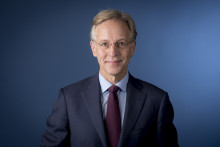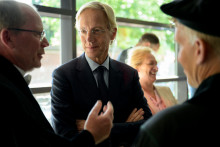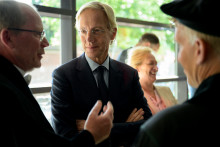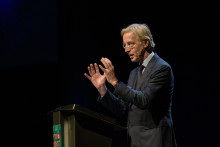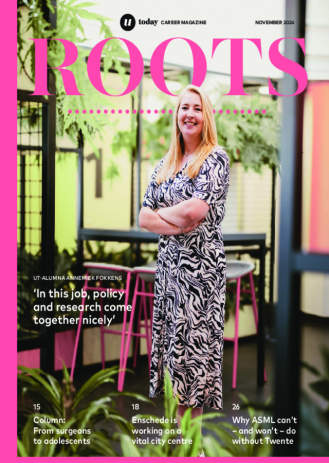‘There’s no scope left for junior researchers in particular and lecturers who are guiding our students’, Dijkgraaf states in a press release. ‘The billions that we invest now are essential to maintaining our country’s position in the world of knowledge.’
The Government wants to spend an extra 700 million euros on higher education and research, in addition to putting another five billion euros in a ten-year fund for research. This was all part of the coalition agreement; Dijkgraaf’s current letter to the House of Representatives outlines how he’s going to distribute that money.
Working capital: 300 million
Worthy of note is the spend on ‘working capital’ for researchers of 300 million euros annually. It’s an idea originally launched by the Royal Netherlands Academy of Arts and Sciences (KNAW). They call these ‘rolling grants’, but the minister has not adopted this name.
Dijkgraaf refers to ‘stable starting and incentive grants, to be spent at researchers’ discretion, in the form of personal working capital for (young) researchers’, even if ‘young’ is relative here. These grants are for lecturers, assistant professors and full professors.
The amount has been split into 156 million euros for starting grants from the regular money earmarked, plus 144 million euros for incentive grants from the special ten-year research fund, which means the latter funding will disappear after ten years.
The starting grants are 300,000 euros for lecturers who have a permanent appointment. This works out to 520 lecturers per year. The incentive grants can be less than 300k, and also target assistant professors and full professors.
Six years but no NWO
‘Researchers can use the grant within a maximum six-year period’, Dijkgraaf explains, ‘for such things as research leave for oneself and team members, new colleagues, and acquisition or use of (small-scale) research facilities.’
During the grant period recipients cannot apply for funding from the Dutch Research Council (NWO) because they will already have sufficient money at their disposal. This should relieve the pressure on NWO application procedures, giving those remaining applicants a greater success rate with the funding body.
The grants will be awarded in proportion to the number of students, but younger universities – Rotterdam, Maastricht and Tilburg – will be getting slightly more. Due to historical reasons, distribution of research funding in the Netherlands is somewhat skewed, and in this way Dijkgraaf can lessen the pain a bit.
Sector plans: 200 million
Another large spend is on the academic ‘sector plans’, for which the minister has earmarked 200 million euros per year. The idea is that universities will be able to collaborate more easily, and that small degree programmes like Dutch language and literature can be kept alive.
Of that 200 million, 60 million is destined for ‘obstacles in sectors which have been identified as priorities by all the parties involved’, something he wants to get started on this year. For now, we just have to wait and see which obstacles he has his sights on.
Universities of applied sciences: 100 million
The universities of applied sciences will be getting 100 million euros per year for their applied research: 50 million from the regular budget and another 50 million from the fund supporting research over the next ten years. By far the greater part of that money (85 million euros) will be supplied directly from government coffers in The Hague, but 10 million euros per year will be available through applications to the Taskforce for Applied Research SIA, which is part of research funder NWO. And another 5 million euros is earmarked for developing the professional doctorate programmes at higher professional education institutions.
EU 75 million, NWO 80 million
But there are additional targets that Dijkgraaf is reserving funding for, such as matching European research subsidies to the tune of 75 million euros. Funding body NWO will get a top-up of 60 million for the ‘open competition’, plus another 20 million for yet to be determined high ranking research projects in which research consortia and institutions have a proven track record.
Consideration of teaching and workload
And naturally he also wants to address problem areas in teaching, even if he is less specific about how to do this. The minister wants more time to reflect on certain issues, such as the increased enrolment of international students, the future of higher professional education, and updating standards reviews in higher education.
He has not allocated a separate amount for lecturer and staff workload issues, although altering the research grant system with the injection of working capital may help that somewhat. But he remains in dialogue with universities and universities of applied sciences on the subject, he says.
The same applies to the push for ‘recognition and rewards’, which grants merit to academics for other things than their research performance, such as teaching, leadership roles and disseminating knowledge within society. No extra money, but continuing consideration.
Student well-being: 15 million
Dijkgraaf also takes note of increased levels of ‘student gloominess, motivation and concentration problems, and substance use’, and students’ concerns about the future. ‘These signals touch me deeply’, he says. He wants to spend 15 million euros per year on well-being.
Impact and shortages
Can higher education and academic research help find solutions to problems in climate, energy, housing, health, security, inequality, labour market and other fields? Yes, Dijkgraaf believes, but that will follow naturally from the other investments.
He is reserving an amount of up to 30 million euros per year for universities of applied sciences for programmes in three sectors with shortages: healthcare, teaching, and technology. That money has to cover everything: from increasing student enrolment to preventing student drop-out and improving preparedness for the labour market.
He is also considering making 20 million available for open science and 10 million for a scientific communication centre so that research results will find their way to a wider public more easily.


